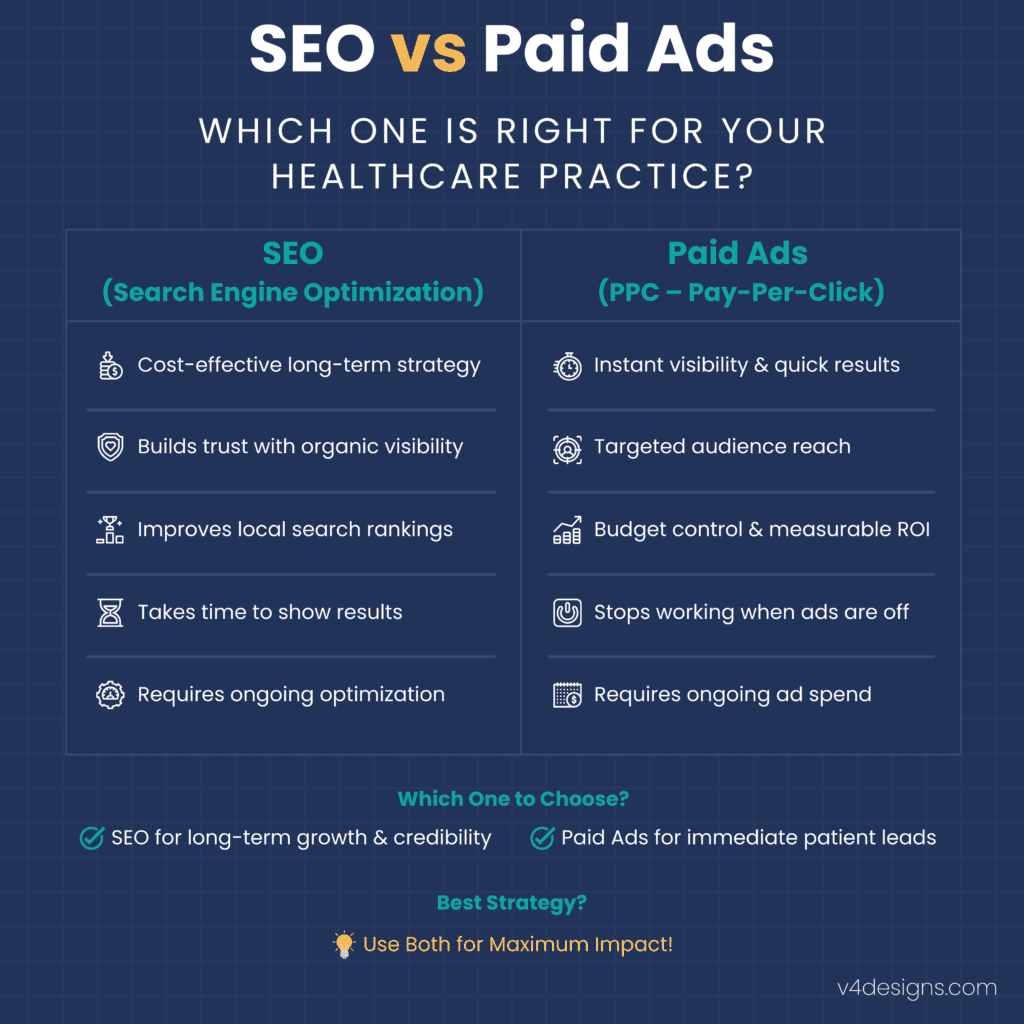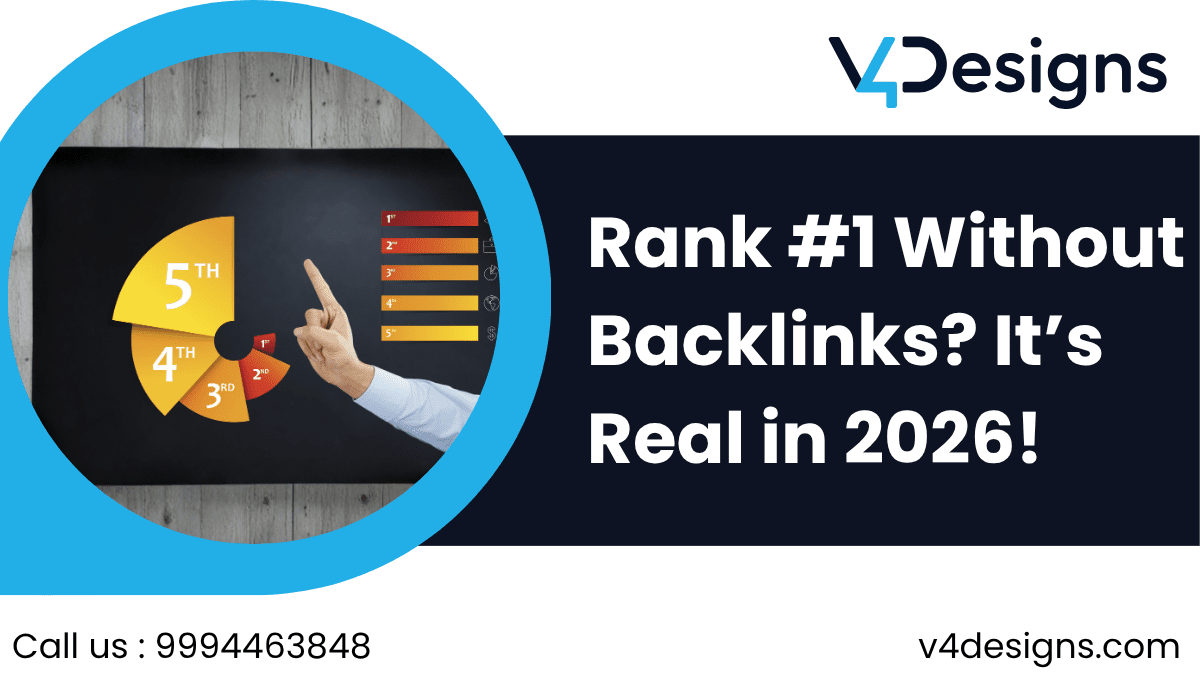Choosing the right approach to grow your healthcare practice can be challenging, and a Healthcare Marketing Strategy Comparison can help you make an informed decision. Should you prioritize SEO or invest in paid advertising? By evaluating each method’s pros, cons, and practical insights, you can determine which strategy aligns best with your goals, budget, and target audience. Let’s dive into the details to guide you in selecting the most effective path for your practice.

Why Healthcare Marketing Strategy Comparison Matter More Than Eve
The healthcare industry is changing faster than ever, and practices that don’t keep up risk falling behind. Here’s the truth:
- Patients face endless options online. If they can’t find your practice, they’ll choose someone else.
- Competitors with better online visibility are attracting your potential patients.
- Attracting new patients or keeping current ones becomes a struggle without a clear marketing plan.
- Patients look for convenience, trust, and easy access—all of which depend on a strong online presence.
- You want to grow your practice, build patient loyalty, and become a trusted name.
- Picture a waiting room full of satisfied patients, a steady flow of referrals, and a thriving practice.
The risk is high. If your practice isn’t visible online, you’re missing out on patients who need your care. The solution? A smart Healthcare Marketing Strategy that works for you.
Choosing the Right Healthcare Marketing Strategy
Healthcare providers frequently find it challenging to allocate their marketing budgets in a way that maximizes impact. With so many options available, it’s easy to feel paralyzed by choice. The wrong strategy can lead to wasted resources, missed opportunities, and stagnant growth.
Why This Matters to You
If you’re a healthcare professional, the success of your practice depends on your ability to attract and keep patients. However, with growing competition and changing patient behaviors, sticking to old marketing methods won’t be effective. You need a strategy that provides measurable results while also being budget-friendly.
SEO vs. Paid Ads
To determine the best healthcare marketing strategy for your practice, let’s compare the two most popular options: SEO (Search Engine Optimization) and Paid Ads (Pay-Per-Click Advertising).
1. SEO: The Long-Term Game
SEO focuses on optimizing your website to rank higher in organic search results. Here’s what you need to know:
Pros:
- Cost-effective over time.
- Builds long-term credibility and trust.
- Target users actively searching for healthcare services.
- Improves user experience and website performance.
Cons:
- Takes time to see results (3-6 months or more).
- Requires ongoing effort and updates.
- Competitive for high-value keywords.
Best For:
- Practices looking for sustainable growth and long-term ROI.
2. Paid Ads: The Quick Win
Paid ads, such as Google Ads or social media ads, allow you to target specific audiences with immediate visibility.
Pros:
- Delivers fast results.
- Highly customizable targeting options.
- Easy to track and measure performance.
- Ideal for promoting time-sensitive offers or new services.
Cons:
- Can be expensive, especially in competitive markets.
- Stops driving traffic once the budget runs out.
- Requires constant monitoring and optimization.
Best For:
- Practices needing quick visibility or launching new services.
How to Choose the Right Strategy
The best healthcare marketing strategy depends on your practice’s unique needs. Here’s a step-by-step guide to help you decide:
Step 1: Determine Your Goals
- Are you looking for immediate results or long-term growth?
- What’s your budget for marketing?
Step 2: Understand Your Audience
- Who are your ideal patients? (Age, location, interests, etc.)
- What are their pain points and search behaviors?
Step 3: Evaluate Your Resources
- Do you have the time and expertise to manage SEO or paid ads in-house?
- Can you invest in professional help, like a healthcare digital agency?
Step 4: Test and Measure
- Start with a small budget for paid ads to test their effectiveness.
- Simultaneously, invest in foundational SEO efforts like keyword research and content creation.
Step 5: Optimize and Scale
- Analyze performance metrics (e.g., click-through rates, conversions).
- Double down on what works and adjust what doesn’t.
Final Thoughts: Which Strategy is Best for Your Practice
Both SEO and paid advertising play important roles in a well-rounded healthcare marketing strategy. If you need quick results and have the financial resources, paid ads can be very effective. On the other hand, if your goal is long-term growth and establishing a solid online presence, SEO is the better option.
For many practices, using a mix of both approaches tends to be the most effective. Begin with paid ads to achieve immediate visibility while simultaneously working on your SEO to support ongoing growth.
Let V4Designs Help You Succeed
Ready to take your healthcare marketing to the next level? At V4Designs – the Best Healthcare Digital Agency, we specialize in creating tailored strategies that drive results. Whether you need help with SEO, paid ads, or the Best Healthcare Website Designs, our team is here to help. Contact us today for a free consultation!
Don’t Miss: Healthcare Website Redesign
FAQs
1. Which is more cost-effective: SEO or paid ads?
SEO is more cost-effective in the long run, as it drives organic traffic without ongoing costs. Paid ads require continuous investment but deliver immediate results.
2. How long does it take to see results from SEO?
SEO typically takes 3-6 months to show significant results, but the long-term benefits are worth the wait.
3. Can I use both SEO and paid ads together?
Absolutely! Combining both strategies can maximize your reach and ROI. Use paid ads for quick wins while building your organic presence with SEO.







